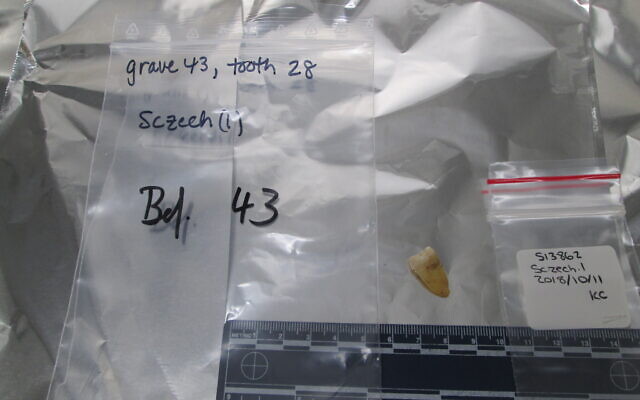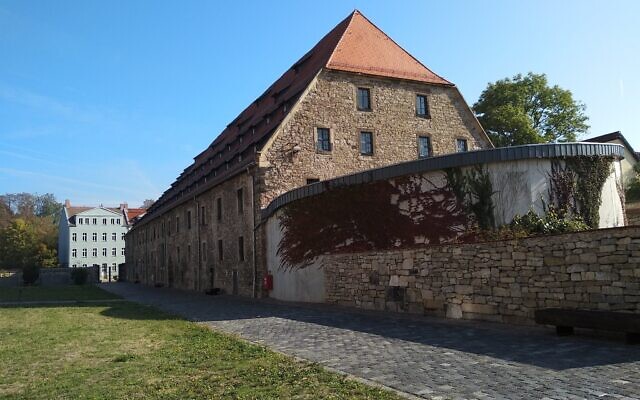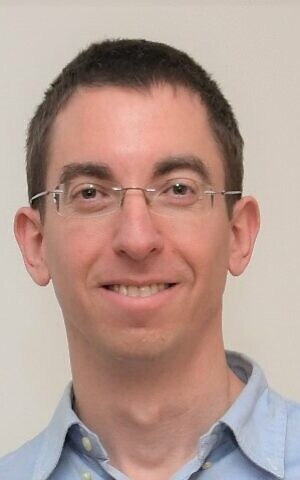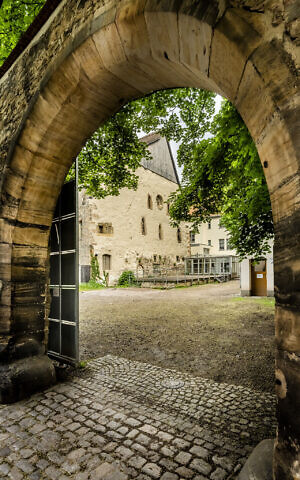Circa the 14th century, Ashkenazi women in Erfut, central Germany, carried a breast and ovarian cancer-indicative BRCA 1 mutation in their DNA. This mutation is unfortunately all too common in their modern descendants’ genomes, which is just one genetic sign that not a lot has changed in the ensuing 700-plus years.
According to research being hailed as “the largest ancient Jewish DNA study so far,” published Wednesday in the prestigious Cell science magazine, by the 14th century Ashkenazi Jews had already received most of their main sources of genetic ancestry. When compared with the DNA markers of modern Ashkenazi Jews, there have been few changes to the genome in the centuries that have followed.
This is just one of the findings afforded by analysis of ancient DNA extracted from teeth taken from a Jewish cemetery that was excavated in a salvage operation conducted according to the wishes of the local Jewish community alongside rabbinic advisers. The skeletal remains were later reburied in a 19th-century Jewish cemetery in Erfut.
In 2013, German archaeologists excavated a portion of the ancient Jewish graveyard of Erfurt ahead of a municipal construction project, uncovering some 47 medieval graves. It was just the kind of potential treasure trove of centuries-old DNA that co-authors Hebrew University Prof. Shai Carmi and Harvard University David Reich were looking for, and they began their study of the remains five years later.
“This work provides a template for how a co-analysis of modern and ancient DNA data can shed light on the past,” said Reich in a press release. “Studies like this hold great promise not only for understanding Jewish history, but also that of any population.”
Get The Times of Israel's Daily Edition by email and never miss our top stories
Through careful analysis of DNA extracted from teeth from 38 individuals followed by a comparison of hundreds of thousands of genetic place markers in modern Ashkenazi genomes, an international team of over 30 interdisciplinary researchers found that the Jews of Erfut “were noticeably more genetically diverse than modern Ashkenazi Jews,” according to co-author Carmi.
“An even closer inspection revealed that the Erfurt population was divided into two groups: one with more European ancestry compared to modern Ashkenazi Jews, and one with more Middle Eastern ancestry,” said Carmi.
Following some three years of testing and analysis, much of which was conducted in technologically advanced clean rooms at Harvard University, the results also indicated that the “founder event” or “bottleneck” that is evident in modern Ashkenazi Jewry’s DNA predated the establishment of the Erfut community, potentially by a millennium.
According to Carmi, some of the genetic diseases associated with modern Ashkenazi Jews, including BRCA 1 mutations and Tay Sachs Disease, point to an extremely small initial population; as it grew, “pathogenic variants that were carried by the founders became widespread.”

Teeth excavated from the medieval Jewish cemetery of Erfurt, from which DNA was extracted for the genetic study. Each tooth is shown before and after DNA extraction. (David Reich ancient DNA laboratory / Harvard Medical School)
Among the methodologies utilized to gain information from the ancient teeth, the scientists sent 10 samples for radiocarbon dating, which found all 10 lived between about 1270 and 1400 CE. They also checked dental isotopes to see if the individuals had grown up drinking the same water and concluded that some were in fact immigrants.
Rare opportunity
The opportunity to study the DNA of a medieval community such as Erfut was just what Carmi and co-author Reich were hoping for, Carmi told The Times of Israel on Wednesday.
There is some historical documentation of the migration patterns and persecution of medieval Ashkenazi populations. However, said Carmi, “Given that no DNA sequences existed for historical Ashkenazi Jewry, we sought to generate ancient DNA data for this population. Our hope was to fill the gaps in our understanding of Ashkenazi Jewish early history.”
The central German city was a thriving Jewish center in the Middle Ages and boasts one of the oldest still-standing synagogues in Europe. The Jewish community settled there in the 11th century; a massacre decimated the community in 1349 but Jews lived in the area until a final expulsion in 1454. At this time, a granary was constructed on top of the graveyard, sealing in the remains of thousands of Jews.

The granary that was built in the 15th century on top of the medieval Jewish cemetery of Erfurt. (Shai Carmi/Hebrew University)
“Jews in Europe were a religious minority that was socially segregated, and they experienced periodic persecution,” said Harvard’s Reich in a press release. “Our work gives us direct insight into the structure of this community.”
Among the excavated 47 graves were two small nuclear families, including children buried near their father who apparently died from a violent blow to his skull. Other more distant family members were also discovered through genetic testing. Carmi said some eight of the 33 viable individual samples were related and allowed that it is possible that the limited available sample means the results do not fully reflect the entire community of Ashkenazi Jewry.
“As with other ancient DNA studies, our historical inferences are based on a single site in time and space. This implies that our data may not be representative of the full genetic diversity of early Ashkenazi Jewry, as we have indeed inferred,” write the authors in the study.
At the same time, the study indicates that “Medieval Ashkenazi Jews are best viewed not as a single homogeneous community (as it came to be at the present), but as an ‘archipelago’ of communities, differentially affected by founder events and mixture with local populations,” according to a FAQ sheet prepared by Carmi.
A further conclusion is that late medieval Ashkenazi Jewry already carried certain disease-causing variants that became increasingly common among Jews as the years went by.
A matter of morals
Because it is against traditional Jewish religious practice to exhume remains for study, there are scant opportunities of examining the DNA of Jewish communities.

Associate professor at the Hebrew University School of Public Health and Faculty of Medicine, Shai Carmi. (Courtesy)
Carmi said that he and his co-authors didn’t want to do anything “unethical” and felt it important and necessary to consult with the local Jewish community as well as a rabbi before commencing the study. The stipulation of the rabbinic authorities was that they only study the already excavated skeletons and only use unattached teeth versus extracting DNA from bones.
Carmi also examines modern DNA for medical research in Israel, which is, he said, a “nightmare” to receive permission to conduct, with multiple committees and requirements and restrictions that make the research “almost pointless to do,” he said.
“It is paradoxical or perhaps ironic that to do a study of ancient DNA, we’re self-regulating. We don’t need to get permission from any committee. These people are dead already,” he said, adding that if he were in charge of regulation, “I would relax much more the regulations on the studies of living people but regulate much more the study of ancient DNA.”

The Old Synagogue of the medieval Jewish community of Erfurt. It is one of the oldest still intact synagogues in Europe, and is now serving as a museum documenting Jewish life in Erfurt. (Stadt Erfurt Marcel Krummrich)
The reason behind the potential need for increased sensitivity over ancient DNA, he said is that results just may contradict long-held traditions and communal perceptions. “People can get hurt emotionally. In that sense it’s important to consult with the communities and do the study ethically,” said Carmi.
“On the other hand, one can argue that the story of those deceased people belongs to the entire humanity and that no one specific community ‘owns’ the remains from a certain place,” he said, acknowledging that work with ancient communities presents researchers with conflicting moral values.
“Moving forward, it will be interesting to see what the opinion is of the rabbis, the scholars,” said Carmi. “Maybe this study will lead to more openness. But maybe it will backfire and we’ll be told it is something we shouldn’t do.”


